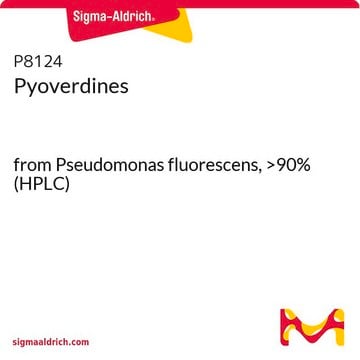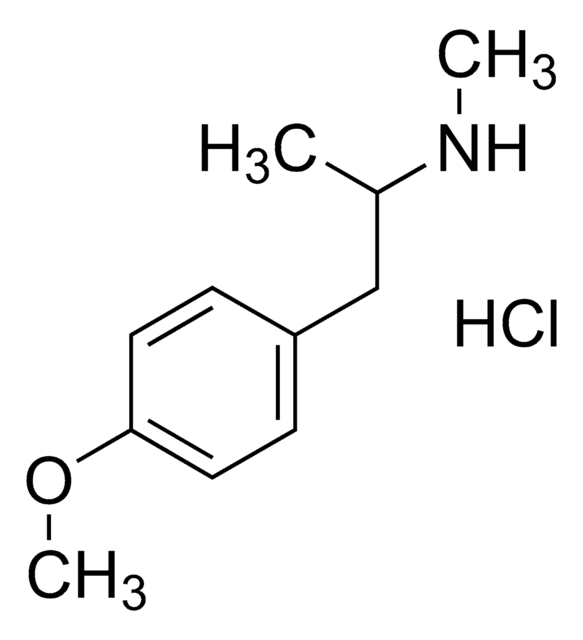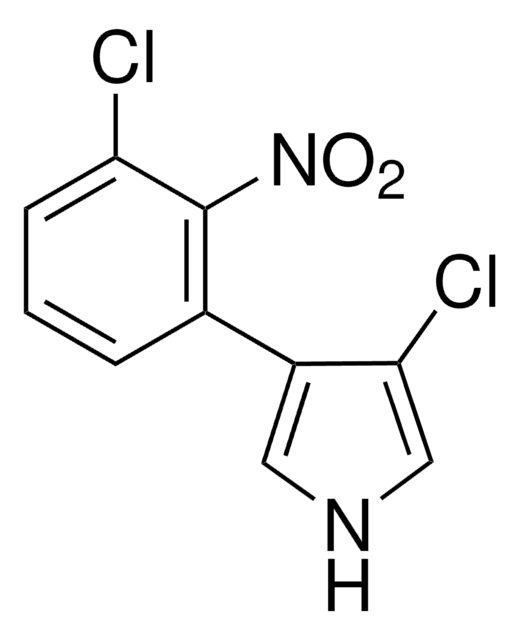P0046
Pyocyanin
from Pseudomonas aeruginosa, ≥98% (HPLC), solid, redox-active phenazine
Synonim(y):
5-Methyl-1(5H)-phenazinone, Pyocyanine, Sanasin, Sanazin
About This Item
Polecane produkty
product name
Pyocyanin, from Pseudomonas aeruginosa, ≥98% (HPLC)
pochodzenie biologiczne
Pseudomonas aeruginosa
Poziom jakości
Próba
≥98% (HPLC)
Postać
solid
rozpuszczalność
DMSO: soluble
acetone: soluble
chloroform: soluble
ethanol: soluble
Warunki transportu
wet ice
temp. przechowywania
−20°C
ciąg SMILES
CN1c2ccccc2N=C3C(=O)C=CC=C13
InChI
1S/C13H10N2O/c1-15-10-6-3-2-5-9(10)14-13-11(15)7-4-8-12(13)16/h2-8H,1H3
Klucz InChI
YNCMLFHHXWETLD-UHFFFAOYSA-N
Zastosowanie
Działania biochem./fizjol.
Uwaga dotycząca przygotowania
Hasło ostrzegawcze
Warning
Zwroty wskazujące rodzaj zagrożenia
Zwroty wskazujące środki ostrożności
Klasyfikacja zagrożeń
Acute Tox. 4 Oral - Eye Irrit. 2
Kod klasy składowania
11 - Combustible Solids
Klasa zagrożenia wodnego (WGK)
WGK 1
Temperatura zapłonu (°F)
Not applicable
Temperatura zapłonu (°C)
Not applicable
Certyfikaty analizy (CoA)
Poszukaj Certyfikaty analizy (CoA), wpisując numer partii/serii produktów. Numery serii i partii można znaleźć na etykiecie produktu po słowach „seria” lub „partia”.
Masz już ten produkt?
Dokumenty związane z niedawno zakupionymi produktami zostały zamieszczone w Bibliotece dokumentów.
Klienci oglądali również te produkty
Produkty
Bioactive small molecules for immune system signaling target identification/validation and antibiotics, antivirals, and antifungals offered.
Nasz zespół naukowców ma doświadczenie we wszystkich obszarach badań, w tym w naukach przyrodniczych, materiałoznawstwie, syntezie chemicznej, chromatografii, analityce i wielu innych dziedzinach.
Skontaktuj się z zespołem ds. pomocy technicznej














